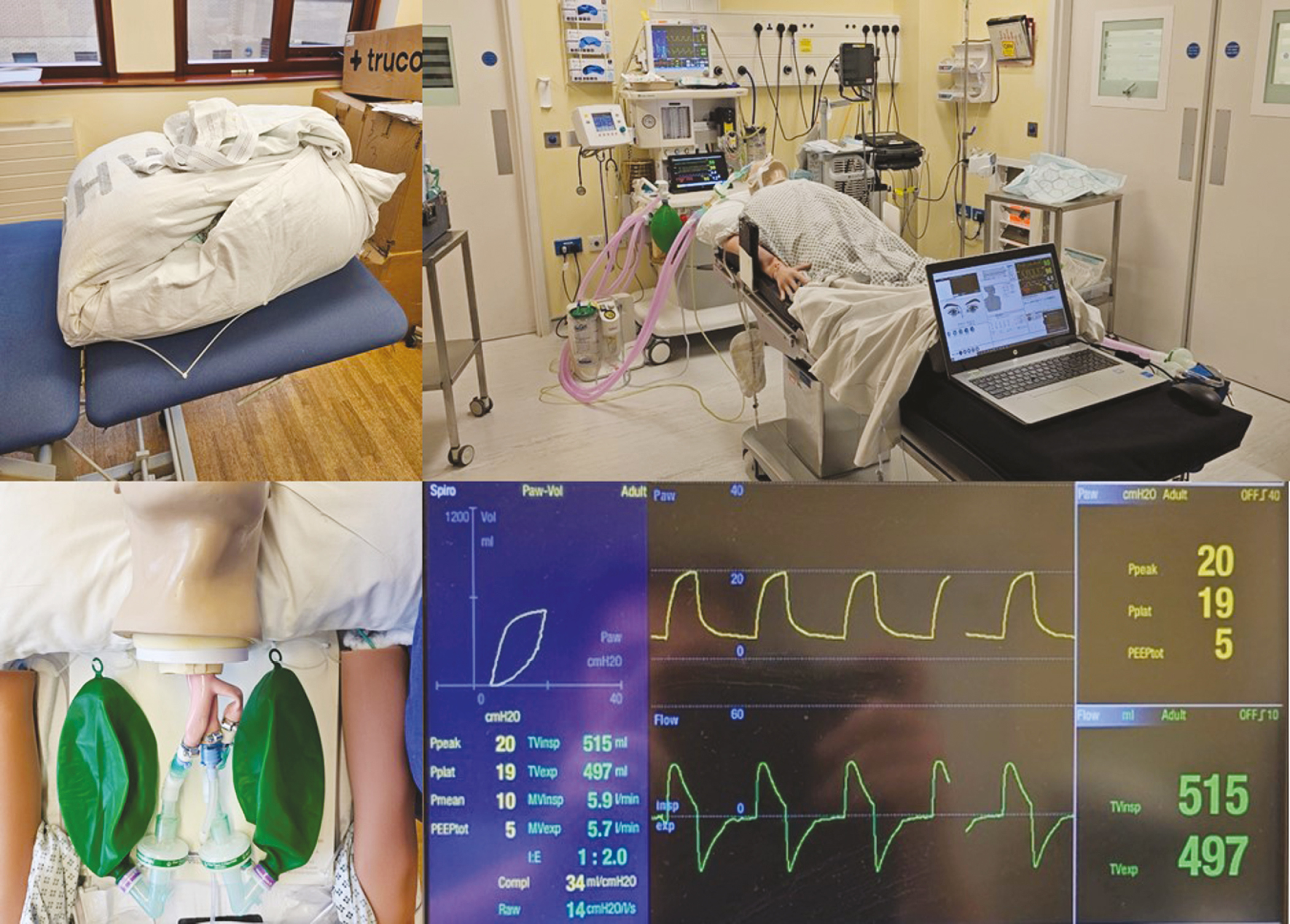
There is increasing demand to demonstrate cost-effectiveness in simulation-based education (SBE) [1]. This challenging truth is one our department has been forced to reckon with. Consequently, this initiative aimed to provide SBE to core trainees (CTs) and operating department practitioners (ODPs) to ASPIH standards [2] without additional funding, a simulation suite, protected teaching time, or more than one faculty member.


These objectives suggested use of in-situ simulation. However, challenges of this format are well described. Examples include prolonged set-up, risk to expensive equipment, high facilitator candidate ratio, high facilitator workload, vulnerability to service requirements and low stakeholder buy-in [3].
To address these challenges, an unused airway trainer head was selected. It was modified using regularly discarded anaesthetic equipment to simulate chest rise, mechanically mimic physiological and pathological positive pressure ventilation both on monitors and bagging. This was combined with a similarly assembled mechanism to simulate regurgitation and arms with cannulae connected to reservoirs. It was covered with padding, a gown and bedsheet, and secured to a canvas creating an en-bloc unit foldable into a case (Figure 1-A129).
These modifications enable one facilitator to transport all their equipment on a single airway trolley and set up in-situ simulation alone in 20 minutes. This allows exploitation of the otherwise unavailable “downtime” of CTs who have exhausted all learning opportunities on their lists and ODPs on Merit or obstetric duties. Sessions have consisted of a standardised 10-minute pre-brief, 20-minute simulation of an anaesthetic critical incident and a 20-minute debrief.
Simulated patient monitor outputs were pre-programmed in stages to anticipate the progression of the incident and the candidate’s responses. Simple controls alter the manikin’s respiratory mechanics or cause regurgitation. This permits a single facilitator to lead, conduct, monitor and debrief simulations.
Written candidate feedback has demonstrated high reported immersion, psychological safety, applicability, specific personal learning outcomes, and elicited systems issues on a local and national level. Theatre co-ordinators have accepted the minimally intrusive nature of this design. The total value of equipment and software is estimated to be less than £5000.
This initiative may be useful in departments with few resources for SBE or to demonstrate SBE’s merits when there is low buy-in from stakeholders. Sadly, this mannikin cannot be fully exposed, undergo CPR or defibrillation. It cannot spontaneously breathe and collapses on circuit disconnection. The vulnerabilities of in-situ simulation to service requirements and facilitator workload remain only partially addressed by this work.
Authors confirm that all relevant ethical standards for research conduct and dissemination have been met. The submitting author confirms that relevant ethical approval was granted, if applicable
1. Hippe DS, Umoren RA, McGee A, Bucher SL, Bresnahan BW. 2020. A targeted systematic review of cost analyses for implementation of simulation-based education in healthcare. SAGE Open Medicine [online]. 8:205031212091345.
2. Purva M, Baxendale B, Scales E. et al. Simulation-Based Education in Healthcare. [online] 2016. Available from: https://aspih.org.uk/wp-content/uploads/2017/07/standards-framework.pdf.
3. Patterson MD, Blike GT, Nadkarni VM. In Situ Simulation: Challenges and Results. In: Advances in Patient Safety: New Directions and Alternative Approaches (Vol 3: Performance and Tools) [Internet]. US: Agency for Healthcare Research and Quality; 2008. Available from: https://www.ncbi.nlm.nih.gov/books/NBK43682/.